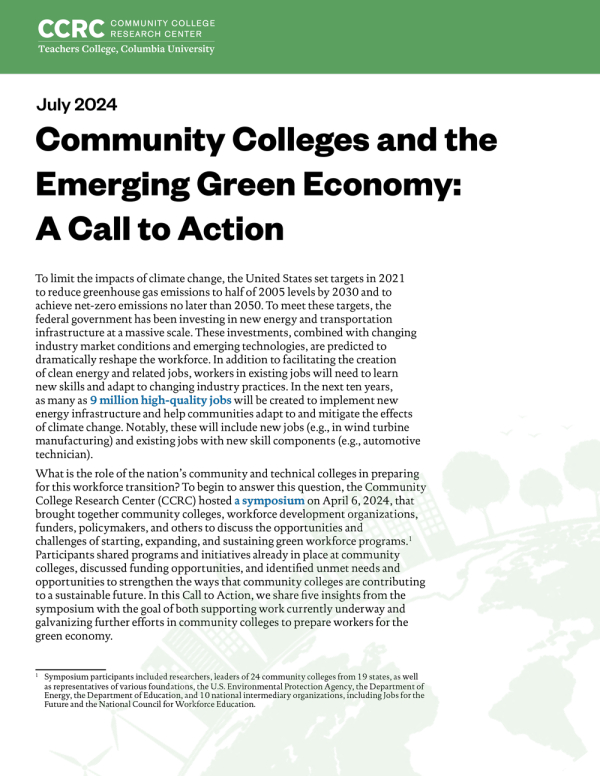
Along with changing industry market conditions and emerging technologies, federal investments in new energy and transportation infrastructure targeted at limiting the effects of climate change are predicted to dramatically reshape the workforce. In the next ten years, as many as 9 million high-quality jobs will be created to implement new energy infrastructure and help communities adapt to and mitigate the effects of climate change. Notably, these will include new jobs (e.g., in wind turbine manufacturing) and existing jobs with new skill components (e.g., automotive technician).
What is the role of the nation’s community and technical colleges in preparing for this workforce transition? To begin to answer this question, the CCRC hosted a symposium in April 2024 that brought together community colleges, workforce development organizations, funders, policymakers, and others to discuss the opportunities and challenges of starting, expanding, and sustaining green workforce programs. In this Call to Action, whose goal is to support work currently underway and galvanize further efforts at community colleges to prepare workers for the green economy, CCRC shares five insights from the symposium:
- Community colleges are uniquely positioned to address challenges posed by climate change and to prepare students for jobs in the green economy.
- Green jobs are already here.
- Green jobs appeal to people across the political spectrum.
- Green jobs have the potential to advance racial and economic equity.
- This is an optimal time for colleges to invest in green workforce training programs.
